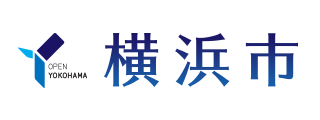- Yokohama-shi Top Page
- Living and Procedures
- Community Development and Environment
- Roads
- Planning and planning
- Barrier-Free Basic Concept
- Barrier-Free Review Council
- The second Yokohama-shi barrier-free examination meeting
Here's the text.
The second Yokohama-shi barrier-free examination meeting
Last Updated June 19, 2024
Outline of the event
Date and time: November 11, 2008
Location: Large conference room on the 10th floor of Kannai Central Building
As soon as possible
- (Private 1) About the status of efforts by railway operators for barrier-free (report)
- (Proceedings 2) About proposal system such as making of basic design
- (Proceedings 3) About making of development guidelines of Yokohama-shi barrier-free basic design
- (Proceedings 4) Ex-post evaluation of basic barrier-free concepts, etc.
- (Proceedings 5) About the examination status of the basic concept
- A. Area around Tsuzuki Ward Town Center
- B (tentative name) Area around Hoshikawa Station
Outline of the proceedings
Status of barrier-free initiatives by railway operators (report)
- At one station, it is said that one route required by law is secured, but the use time of the elevator on the other route is limited, so please do not consider this to be completed.
- We are promoting the qualification of service assistants at each company, but on the other hand, there are some inappropriate responses to persons with disabilities. I want people with disabilities to understand that they also use fares.
- There is a case where getting on and off is color-coded by sign, but this is an interesting attempt.
- Some railway operators provide guidance to hearing-impaired people, etc., that they will respond by writing, but by all means, I would like you to have them respond with a writing instrument at the ticket gate and specify it. I would like you to install ear marks and write text in voice guidance.
- While allowing volunteers to assist in getting on and off as a station volunteer, he is also working to obtain service assistant qualifications. The station yard should be supported by a line between professionals and volunteers, such as by responsibly by station staff and railway operators.
- Under the new barrier-free law guidelines, wheelchair-accessible escalators are not permitted in principle as means of transportation for wheelchair users. It is said that elevators and slopes will be actively promoted.
- The handle-type electric wheelchair (senior car) has not been negotiated between the user and the railway company, but it has become possible to get on when a person who can only drive a senior car applies and is paid a sticker .
About proposal system such as making of basic design
- For proposals from residents, it is advisable to refer to the residents' proposal system in the district plan. Support for making proposals is also important. (Dispatch of professional consultants)
- While the government listens to the proposer, accepts the proposal, examines it within the agency to judge the validity, and reports it to the council, and proceed on the premise that it will be made. .
- It is difficult for citizens to propose a draft. I couldn't do anything good without support, so I thought I would take a backup system such as hearings.
About making of development guidelines of Yokohama-shi barrier-free basic design
- Chapter 3 has "soft initiatives", but I think it will be included behind "contents of basic concept" in Chapter 1. "Contents" → "Method" → I think it would be better to make the following efforts.
- When creating, refer to the “Guidebook on the Creation of Basic Barrier-Free Concepts” prepared by the government and the “Guide to Formulation of Basic Concepts Based on the Traffic Barrier-Free Law” issued by the Traffic Ecology and Mobility Foundation.
- According to the guidelines, Yokohama City limits its basic concept to "go around stations", but the purpose is different from "can be done anywhere" in the new barrier-free law. It can be understood if it is a guideline used only by the city, but it is doubtful that it will be limited if it is also used for a proposal system by citizens.
Ex-post evaluation of basic barrier-free concepts, etc.
- It is important to incorporate the opinions of citizens in the ex-post evaluation, and it is better to give not only negative points but also good points. Whether an external person (evaluator) is involved in a specific business plan or project implementation part affects the last evaluation.
- As a person who created the basic concept, I would like to verify the site. It's hard to see everything, so you need to think about something.
- Considering the evaluation at the stage, there are three evaluation stages. There is a good idea to set up the basic concept, whether the specific business plan was appropriate, and a business evaluation after the project was implemented. What kind of schedule and efforts will be made?
- Regarding the evaluation after the implementation, there is an idea that the project is evaluated by looking at the issues of the priority maintenance area of the basic concept, but this alone has a problem in ensuring continuity.
- The span from formulation to implementation is long. It is necessary for citizens to be able to continue from the early stage as their own problems from development to evaluation.
- The hardware development of specific businesses will not be affected. Soft measures and operation aspects may be shaken, and I think there is a part where citizens can cooperate.
Inquiries to this page
Road Policy Promotion Section, Road and Highway Bureau Road Policy Promotion Department
Telephone: 045-671-4086
Telephone: 045-671-4086
Fax: 045-550-4892
Email address: do-barrierfree@city.yokohama.jp
Page ID: 672-360-000







